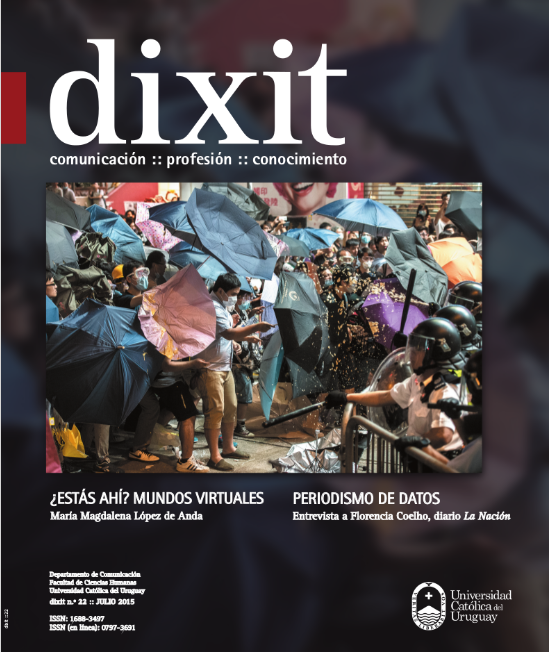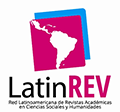An algorithm to solve a city
DOI:
https://doi.org/10.22235/d.v0i22.381Keywords:
artificial intelligence (AI), waze, GPS, social media, algorithm, smartphone, technology, internet user, interactivityAbstract
Taking waze (GPS navigator for smartphones with social media add-ons) as a starting point, this piece reflects upon the way in which interaction with technological devices shapes our relationship with our environment.
Downloads
References
García Canclini, N. (2007). Lectores, espectadores e internautas. Barcelona: Gedisa.
Graves, R. (1955). The Greek Myths (vol. 1). Londres: Penguin.
Holmes, R. (2008). La edad de los prodigios. Terror y belleza en la ciencia del Romanticismo. Madrid: Turner Noema.
Idel, M. (1990). Golem. Jewish Magical and Mystical Traditions on the Artificial Anthropoid. Nueva York: State University of New York Press.
Isaacson, W. (2014). Los innovadores. Los genios que inventaron el futuro. Buenos Aires: Debate.
Sadin, E. (2013). Las tecnologías digitales debilitan la capacidad de decidir. Página 12. Recuperado de http://www.pagina12.com.ar/diario/sociedad/3-233880-2013-11-19.html
Schwartz, H. (2004). Tree of Souls. The Mythology of Judaism. Nueva York: Oxford University Press.
Sheeley, M. (1818). Frankenstein. Or the Modern Prometheus. Londres: Penguin.
Turkle, S. (1984). The Second Self. Computers and the Human Spirit. Cambridge: The MIT Press.
Turkle, S. (1995). La vida en la pantalla. La construcción de la identidad en la era de internet. Barcelona: Paidós.
Turkle, S. (2011). Alone Toghether. Why do We Expect More From Technology And Less From Each Other. Nueva York: Basic Books.
Turkle, S., y Fischetti, M. (2014). The Networked Primate. Scientific American, 311(3): 82-85.
Winocur, R. (2012). Inmigrantes y nativos digitales: una alteridad sin interlocutor. México: MUAC.
Downloads
Published
How to Cite
Issue
Section
License
Copyright (c) 2015 Dixit

This work is licensed under a Creative Commons Attribution-NonCommercial 4.0 International License.
From issue number 32 onwards all contents are licensed under the Creative Commons Attribution 4.0 International License (CC BY 4.0).
Issues number 29-31 are licensed under the Creative Commons Attribution-NonCommercial 4.0 International License.
The contents corresponding to number 28 and earlier editions are under the Creative Commons Attribution-NonCommercial-ShareAlike 4.0 International License.


















